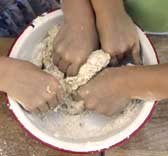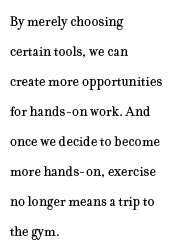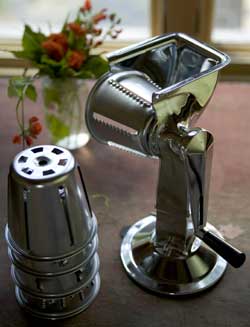




by MaryJane Butters
It’s easy for me to exercise, because I do Farm Aerobics—also known as chores—and the decision is never mine. No matter how tired I am, no matter how cold, no matter how deep the snow or mucky the mud, my chickens need fresh water, fresh hay, or a twenty-five-pound sack of feed. Some mornings, after an especially gorgeous sunrise, I’m tempted to hoist a sack over each shoulder, taking advantage of the bounce I feel.
In the winter, Esme and Angie and my twelve new Dexter heifers need their watering trough drained regularly to keep their drinking water fresh. That means an eighth of a mile down into the lower pasture and an eighth of a mile back up, with fifteen pounds of hose on each shoulder—I look like a Sherpa lugging ropes for mountain climbers. Every day my goats, Cassie Mae, Flip, and Hallie, need a handful of Asian pears from my root cellar. Feeding them, of course, means walking an eighth of a mile in the opposite direction. And if I think to stop in the shop for some pruning shears, they may also get fresh branches off the plum trees. (But then it’s always back to the shop. I’ve learned my lesson there: A good farmer always puts a tool back. No matter the walk, no matter the reason, no matter the clock.)
Once you decide to be a farmer, exercise happens naturally. You stretch when you must, hale that bale, bend, lift, and pull. And the benefits are immediate. If you work outside, the air is so fresh you bring the smell of it back indoors on your clothes, oxygenating your lungs double-time. Exercise keeps your lymph fluid circulating and your immune system strong. And it’s what keeps your heart healthy, too—by making it pump fast. Chores make my heart muscle contract like a fist milking a cow.
Why can’t more of us—in the city and the country—know the restorative power of exercise that’s built into our lives? By merely choosing certain tools, we can create more opportunities for hands-on work. And once we decide to become more hands-on, exercise no longer means a trip to the gym.
In old photos of my mother’s kitchen, there isn’t a single electrical gadget on her counter. Yet she grated, sliced, whipped, puréed, and kneaded enough food for our family of seven, and she did it seven days a week. The result? Her forearms looked as if they belonged to a shot-putter. Without ever pulling on a pair of spandex pants or paying a monthly gym fee, my mother became an athlete by doing everyday garden, stitching, and kitchen chores.
Milling flour the old-fashioned way can be a workout too. With a hand-cranked mill, grinding a few cups of flour does a number on your lungs, your back, even your legs. Your whole body gets into it. There’s a twenty-minute, upper-torso workout right there.
Other tasks mean other opportunities. Every August, we turn about forty heads of cabbage (that we grow ourselves) into a winter’s worth of sauerkraut (the real, alive, unpasteurized kind) by grating all of it by hand. I could use an electric food processor, but I’m superstitious. I want every crock to “take.” For some reason, whenever I’ve used an electric food processor to speed things up, I’ve lost entire crocks to mold. Plus the toil makes the end product even more worthwhile and tasty and nutritious.
For farm kitchen exercise, give your body what it wants—exercise that feeds you. Let’s use tools like hand-crank vegetable gadgets, coffee grinders, and cherry pitters. Our arms act as throttles, our hearts stroke like an engine, and air fuels our lungs. Remember good old-fashioned, non-electric can openers? Let’s turn our kitchens back into gyms again—if only because doing it yourself (by hand) means doing yourself good.
For a vast array of non-electric tools, try Lehman’s, created to supply Amish people with life “exercise” tools, www.lehmans.com, 1-888-780-4975.